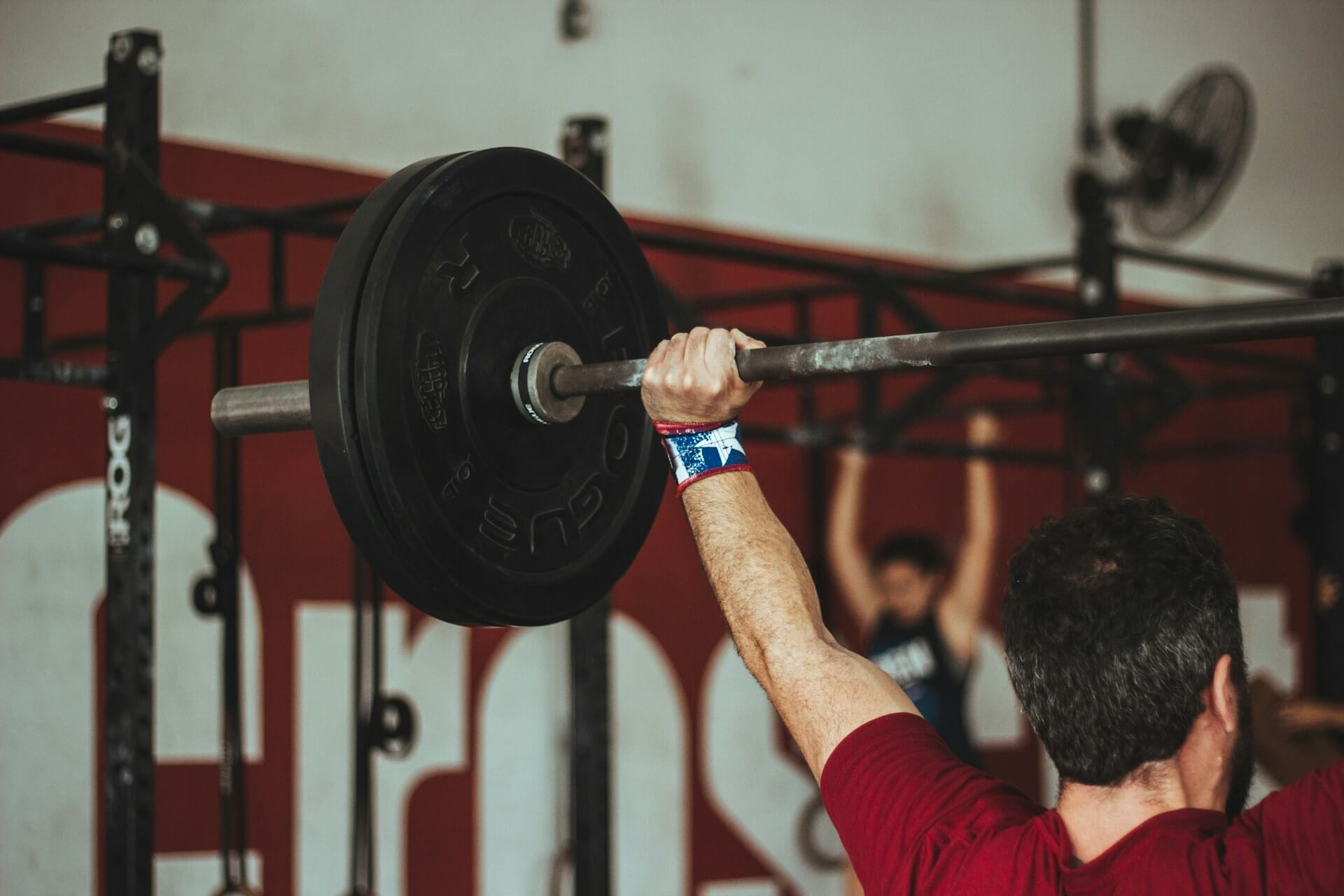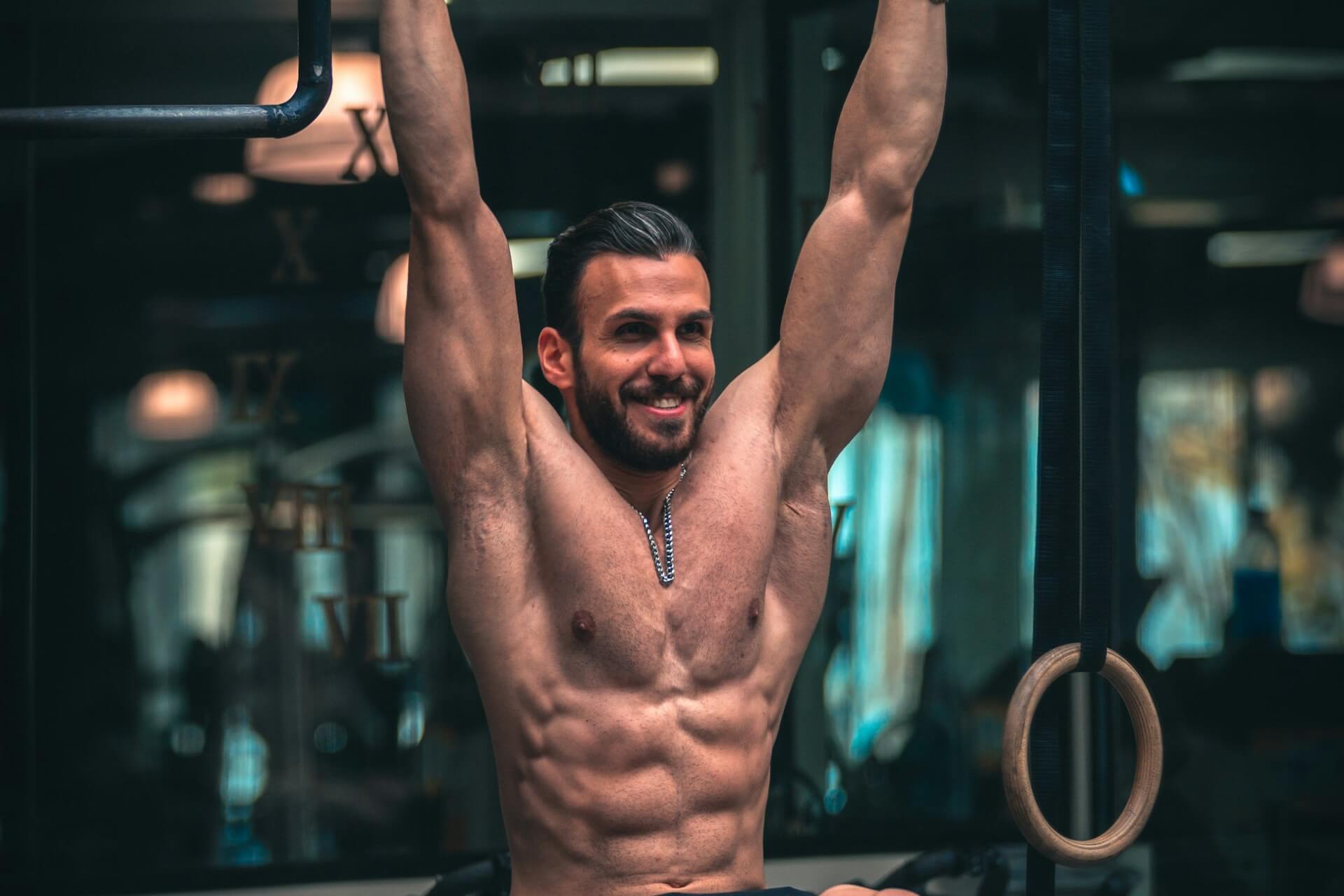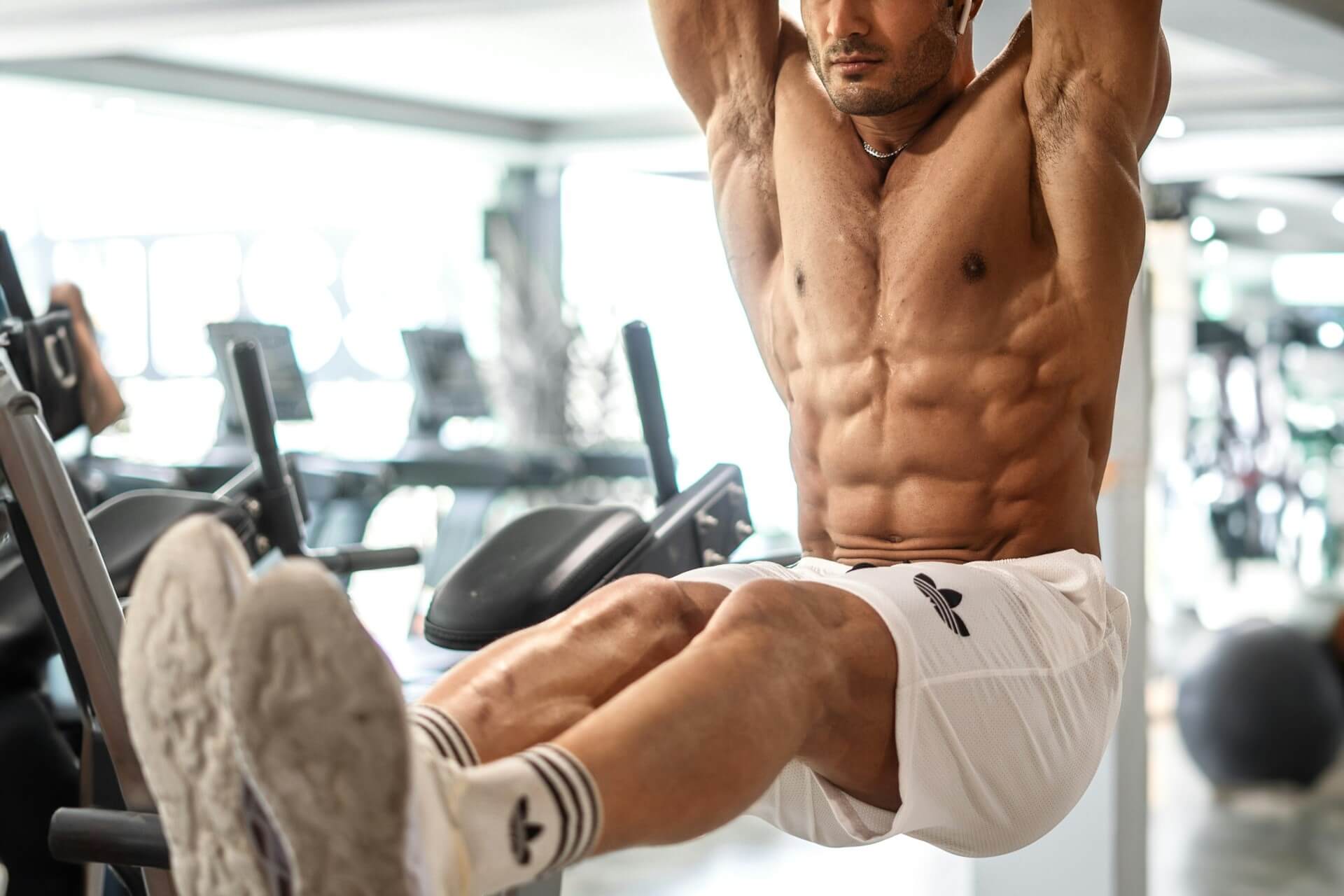
As an Amazon Associate, Modded gets commissions for purchases made through links in this post.
The dead hang is about as simple as exercises come. Despite that simplicity, it’s a great addition to your routine, no matter what your fitness goals are. Here’s a closer look at dead hangs’ benefits, potential risks and how to incorporate them into your workout.
Dead Hang Benefits
Believe it or not, simply hanging from a pull-up bar can be a big boost for your fitness. While you probably won’t get jacked from this exercise alone, the dead hang’s benefits are hard to ignore.

Improves Your Grip Strength
The most noticeable benefit of the dead hang is that it strengthens your grip. Regardless of how fit you are, if you hang on a bar long enough, it’ll get pretty difficult to hold on after a while. Pushing that limit — especially without chalk or grips — can work wonders for your grip strength.
Improving your grip strength is a crucial part of your fitness journey. The more you can hold onto, the more you’ll be able to lift for faster muscle gains. Studies also show that grip strength is a useful biomarker for aging, with a stronger grip being associated with a longer, healthier life.
Decompresses Your Spine
Dead hangs also decompress your spine. When you hang from the bar, gravity pulls your body down, stretching your joints without any unnatural movement or excessive weight. In addition to making you feel less stiff, this decompression can relieve back and shoulder pain.
Muscle strain in your shoulders is common with poor lifting form or if you overwork your upper body. Dead hanging can counteract that strain so you can keep on lifting without hurting yourself. The decompression will also help you maintain better posture, both improving your lifting form and helping you in everyday life.
Strengthens Your Upper Body
Another one of the dead hang’s benefits is that it offers an upper-body workout. While it’s not an intense exercise, it engages several key muscle groups, including your delts, traps, lats and forearms. You probably won’t see serious gains from hanging, but it’s a low-impact way of strengthening these muscles to improve other movements like pull-ups or rowing.

Increases Your Flexibility
Similarly, dead hangs improve your flexibility and mobility in your upper body. When you hang, your arms lock out straight over your head as gravity pulls you down. This light pressure and full extension stretch your joints and stabilizer muscles, especially around your rotator cuff.
Regularly experiencing this extension will help you move your arms and shoulders more easily. This flexibility will improve other movements like pull-ups and cleans so you can lift more with less risk of injury. It’ll also boost your recovery time if you’ve injured your shoulder, making dead hangs a great physical therapy movement.
Are There Any Risks to Dead Hangs?
Like any exercise, dead hangs’ benefits go hand-in-hand with some risks. However, because this is a low-impact and usually static exercise, you’re less likely to hurt yourself doing them than you are, say, lifting weights.
The biggest risks with dead hangs are wrist strain and joint pain around your shoulders and elbows. To minimize your chances of injury, don’t hang too often or for too long, especially if you’ve recently injured your upper body.
How to Do Dead Hangs
Dead hangs are remarkably simple. All you need is a pull-up bar — which you can install at home fairly easily — and something to step on to reach it.
To do a dead hang, step up to the bar, grab it, then step off whatever you used to get up there so your feet hang above the ground. You could also jump up to the bar to grab it, but this will cause more strain, so avoid it if you have an injury.
Once you’re hanging, keep your arms straight and stay still. Try not to lean to one side or the other, too, so you hold equal weight with each arm.

Beginners should hang for 10 seconds before dropping and resting, then repeat for three sets. As you improve, you can hang for longer and do more sets. Regularly going to failure — hanging until you physically can’t anymore — will yield the best results, but don’t do it every set.
Dead Hang Workout Ideas
You’ll get the most out of dead hangs’ benefits if you incorporate them into a larger workout routine. Here are a few ideas for implementing them in your fitness plan.
Add Hangs to Your Upper Body Workout
Dead hangs mainly work your shoulders and grip, so they’re a great addition to an upper body workout. Improving your grip strength is key to growing your forearms in other movements and stretching your back can prevent injury from your heavier lifts.
Consider doing a few hangs to warm up before a weightlifting routine or as a cooldown afterward. Alternatively, you could do them in between heavier sets to give yourself a little recovery time while still fatiguing your muscles enough for continued growth.
Pair Dead Hangs With Cardio
You could also create a great low-impact workout by alternating hanging and cardio. The hangs should strain you enough so the cardio portions get your heart rate up for some serious calorie-burning.
A simple but effective way to do this is to try to hang for a cumulative 10 minutes. Every time you drop from the bar, run 500 meters. Try to complete this workout as quickly as possible by running faster or holding on longer.
Experiment With Variations

It’s also worth playing around with some dead hang variations. Hanging from gymnastics rings instead of a pull-up bar adds a layer of difficulty and will strengthen your stabilizer muscles. Lifting your knees or holding your legs in front of you for an L-sit will add a serious core workout to the mix.
You can also experiment with different grips. Face your palms away from you to target your back and face them toward you to work your biceps more.
Integrate Dead Hangs Into Your Fitness Routine Today
There are many benefits to dead hangs, so you’re missing a lot if you’re not regularly doing them. Whether you want to improve your grip, straighten your posture or relieve back and shoulder pain, hanging will do the trick. Follow these guidelines and implement this exercise into your routine today.





